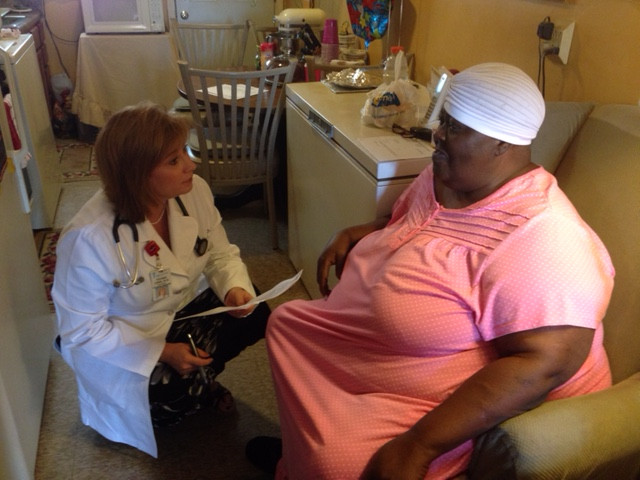
New Roads is one of the oldest towns in the Mississippi Valley, but it symbolizes the new health care challenges facing rural America today. A town where physicians are in short supply, New Roads provides a perfect training ground to expose medical students to the rigors of practice in an underserved area. That’s why in December 2009, Tulane University School of Medicine launched the Tulane Rural Immersion Program (TRIP), an innovative pilot designed to improve health care in Louisiana by increasing the number of doctors entering rural practice.
With a grant of $411,400 from the Josiah Macy Jr. Foundation, TRIP sends a group of third-year medical students to live and train in a remote part of Louisiana for nine months. The students work under the guidance of an experienced primary care physician, or mentor, who gives them hands-on experience with patients and emphasizes relationship-based care and continuity of care. Students also learn how to work side by side with members of the clinical care team and work with other health professionals in the community, including nurses, social workers and pharmacists.
In the traditional medical school structure, medical students do a one- or two-month clerkship and then move on to another clerkship with a completely different set of patients, teachers and colleagues. TRIP is different. It directs a pool of medical students towards rural practice by immersing them in the community for a long period. “When students live and work in the community, they quickly start to develop relationships with patients as well as with their teachers,” says TRIP Director Dr. Richard Streiffer, professor of Family and Community Medicine at Tulane University School of Medicine. He recalls one student in the program who treated a patient in the doctor’s office and then worked an after-hours shift in a local emergency room where she recognized and helped the same patient. “She knew the medical history and could follow up with the same patient back in the office,” says Streiffer, adding that such experiences give medical student’s better skills for real practice.
Addressing a Shortage of Health Professionals
The main goal of TRIP is to expose students to rural medicine and thereby increase the number of students who will consider practicing in rural areas after they graduate, Streiffer says. Right now, rural areas nationwide suffer from a shortage of health care professionals, including primary care or family practice physicians. But the situation is particularly severe in Louisiana: More than 90 percent of the state qualifies as a Health Professional Shortage area. The severe shortage in rural parts of Louisiana “has persisted or worsened despite the graduation of 400 new physicians and the training of 1,500 medical residents in the state each year,” says Streiffer.
Since the program launched, Tulane has recruited practicing rural doctors to serve as mentors and has developed a curriculum that can help train medical students to function in small towns. In addition, Tulane reaches out to recruit students from rural areas in the hopes that they will want to go back and practice in their home town.
Building Relationships to Improve Rural Health
The program has already generated collaborations with local partners that can help enrich the experience for students and build skills of health professionals in the community. For example, Tulane’s surgery department has already started to work with several small, rural hospitals to offer training in rural trauma care for local health personnel. One medical student in the program has established a tie with a local school board to start a project that will address high rates of childhood obesity in one rural Louisiana parish.
TRIP has inspired other specialties. Tulane’s Pediatrics and Surgery Clerkships are now exploring rural sites for students, and the school has created a rural practicum for preventive medicine residents so they get exposure to public health issues in rural communities, something lacking in their curriculum now.
Communities that host students have been very appreciative of the community-academic partnership, which promises to bring them not only a new crop of young doctors but also changes that can improve the health of many rural residents. Streiffer says one of the biggest lessons they’ve learned is the importance of building and sustaining relationships in the community. “This reflects the reality that all relationships are truly local, and nothing can really substitute for local and direct efforts,” adds Streiffer. “This is a marathon, not a sprint. We plan to pace ourselves so we can sustain the effort for the distance.”